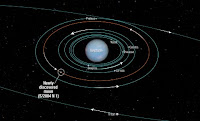It is one of the great astronomy fun facts: most of the elements that make up our bodies did not exist when the universe was young. Then there was nothing except hydrogen, helium and lithium. Heavier elements such as iron are forged heat and pressure deep within the star much later.
Even stars can not create heavy elements like gold. This requires an incredibly strong shock wave, and until now it was not known what might fire him.
However, the team of astronomers from the Harvard might be able to come up with an answer.
The gold was created using titanium collisions between neutron stars - incredibly massive layers of the star remains after her death.
"People have raised a lot of random data, but until now it comes to actually debate was no concrete evidence and facts," said study leader Edo Berger.
However, everything changed last month when NASA's orbiting telescope detected beams of high energy gamma rays, which lasted only two tenths of a second.
These beams of gamma rays appear to be constant in the universe, but as bundles of long duration cause a supernova, or exploding star, bundles of short duration has not yet been able to explain.
When these beams flashed, astronomers immediately directed another telescope in Chile in the same spot and caught the glow of visible light. Once a week the Hubble telescope focused on the same spot, the light was still present, although much faded.
The characteristics of this light can be explained by the explosion of new atom whose mass is nearly 3,000 times the mass of the earth of which are radioactive and cause seeding. Some atoms of platinum, lead, and other heavy elements while some weighing several times the mass of the moon, pure gold.
The best explanation for this intense beam would be a clash of two neutron stars. Collisions are astounding and happen very quickly, and theorists believe that the neutrons are crucial for the formation of heavy elements.
Do these collisions in our system comes once in 100,000 years on average, and this could explain the lack of funds in our galaxy.
Even stars can not create heavy elements like gold. This requires an incredibly strong shock wave, and until now it was not known what might fire him.
However, the team of astronomers from the Harvard might be able to come up with an answer.
The gold was created using titanium collisions between neutron stars - incredibly massive layers of the star remains after her death.
"People have raised a lot of random data, but until now it comes to actually debate was no concrete evidence and facts," said study leader Edo Berger.
However, everything changed last month when NASA's orbiting telescope detected beams of high energy gamma rays, which lasted only two tenths of a second.
These beams of gamma rays appear to be constant in the universe, but as bundles of long duration cause a supernova, or exploding star, bundles of short duration has not yet been able to explain.
When these beams flashed, astronomers immediately directed another telescope in Chile in the same spot and caught the glow of visible light. Once a week the Hubble telescope focused on the same spot, the light was still present, although much faded.
The characteristics of this light can be explained by the explosion of new atom whose mass is nearly 3,000 times the mass of the earth of which are radioactive and cause seeding. Some atoms of platinum, lead, and other heavy elements while some weighing several times the mass of the moon, pure gold.
The best explanation for this intense beam would be a clash of two neutron stars. Collisions are astounding and happen very quickly, and theorists believe that the neutrons are crucial for the formation of heavy elements.
Do these collisions in our system comes once in 100,000 years on average, and this could explain the lack of funds in our galaxy.












